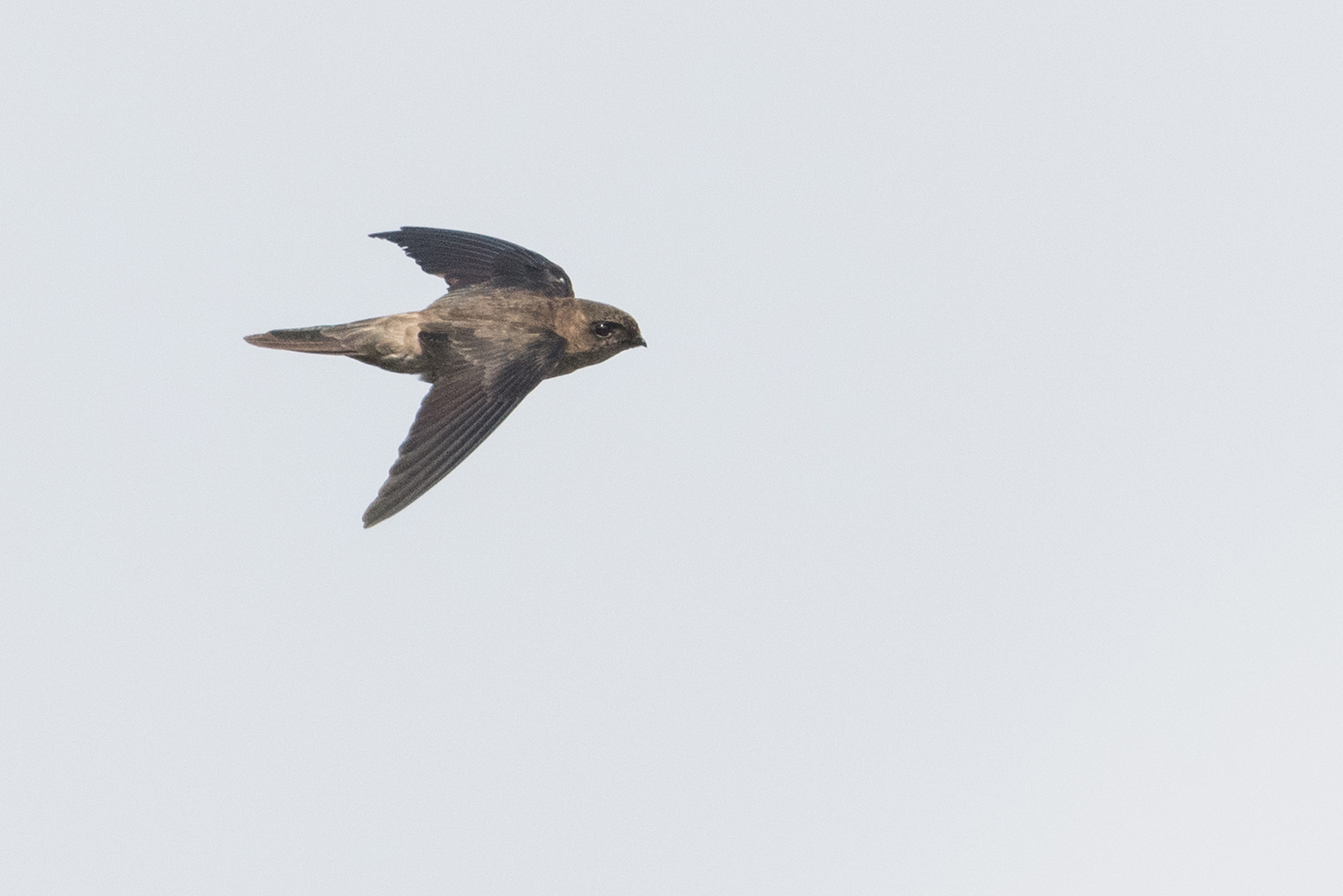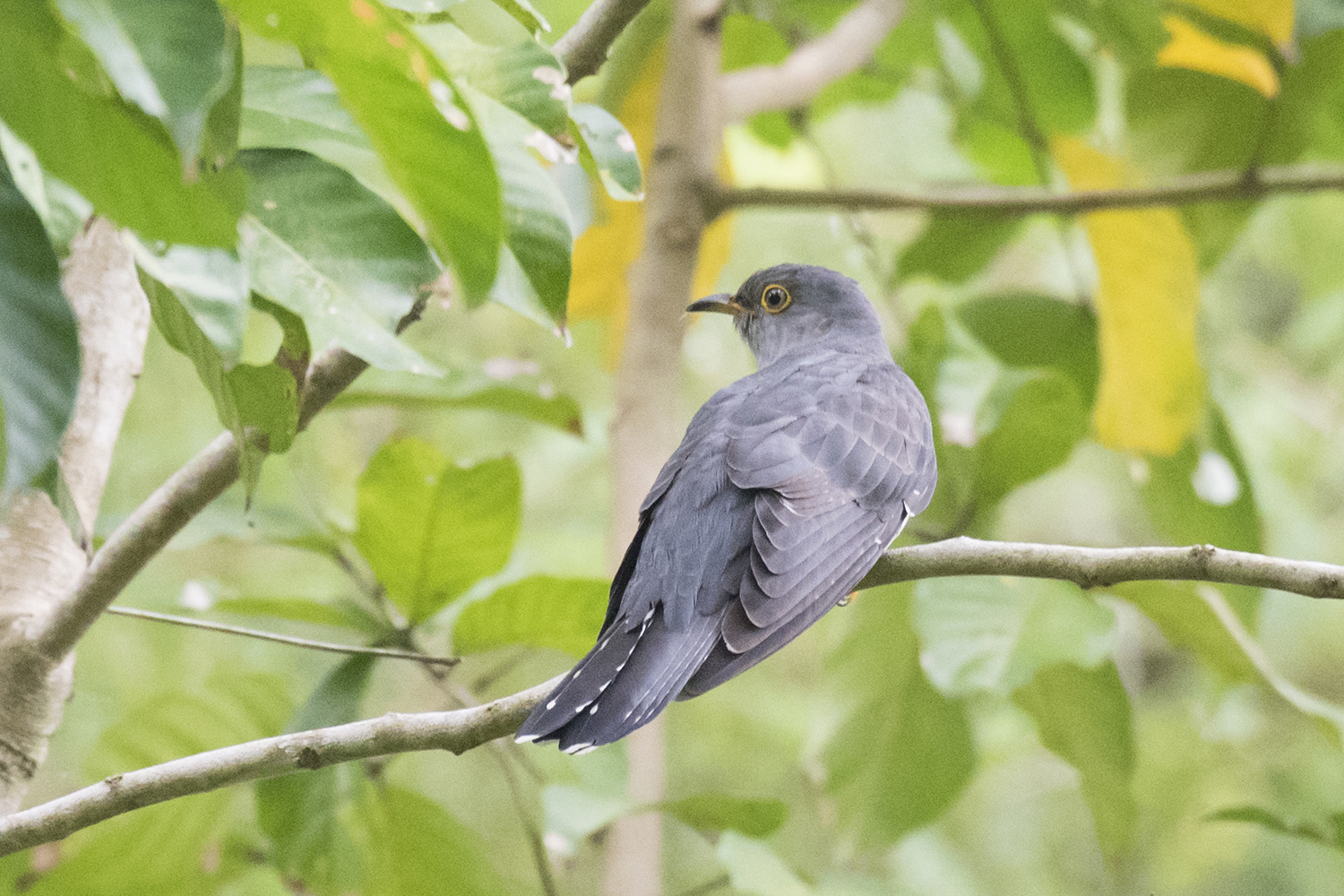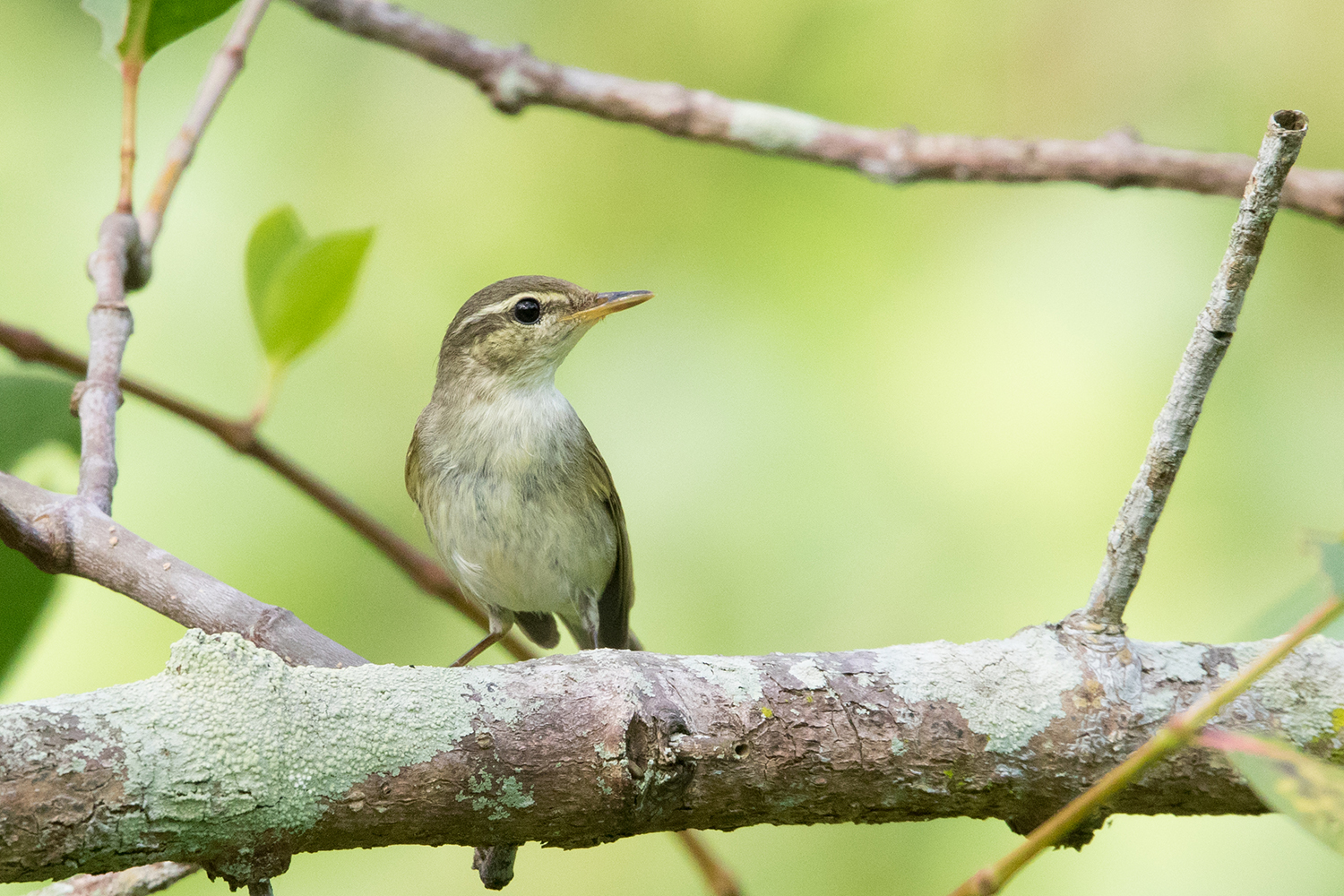By Sin Yong Chee Keita
Groups of birds like sparrowhawks and flycatchers are known to be notoriously difficult to identify. These birds, however, can usually be distinguished in the field by referring to the multitude of identification features. Our team has previously prepared various references for raptors, flycatchers, pipits, and more flycatchers.
There are other species pairs that are even tougher, and these include the Common vs Pacific Swift, Northern vs Brown Boobook, Blyth’s vs Amur Paradise Flycatcher, Red-necked vs Little Stint, and Javan vs Kentish Plover among others. The two Swifts often fly very high up in the sky, making it difficult to see their diagnostic features. The Common Swift additionally is extremely rare in Singapore (with only three records), so most birds are generally assumed to be Pacific Swifts unless proven otherwise. The two Boobooks can be told apart via their underparts, or more reliably by their call. The Northern Boobook, though, is rarely heard in Singapore and there is only one known recording of them calling here. The two Paradise Flycatchers are actually not too difficult to identify with decent looks in the field, but identifying them from photographs is a much tougher task as lighting and angles can heavily affect their colours and contrasts. The two stints and plovers present a slightly different problem, in that the Stints are generally too far away in Singapore that their key identification features cannot be seen. Most birds are assumed to be Red-necked based on their abundance and the Little Stint only has two confirmed records. The Javan Plover, with only one accepted record, is best identified in their breeding plumage, unless multiple excellent photographs with different angles and comparisons are available.
Yet having said that, these groups of birds can still mostly be identified. There is an even more exciting group of birds that, at least based on current knowledge, simply cannot be conclusively identified in the field in Singapore.
Edible-nest Swiftlet and Black-nest Swiftlet
Two species of Aerodramus swiftlets are on the Singapore checklist right now, the Edible-nest Swiftlet and Black-nest Swiftlet. These two birds differ in measurements, with the former being smaller than the latter, and those with experience handling the birds can make educated guesses of the birds flying around in the field. The main problem is that these identifications can never be confirmed unless either the birds are caught or are seen flying on their nests – the Edible-nest Swiftlet has a bare, white nest made from saliva, while the Black-nest Swiftlet has their nests black due to the feathers they add. Additionally, the Himalayan Swiftlet is suspected to be in Singapore by some (with some controversy), but as of now there are no confirmed records. We have indeed seen birds that seem to be different from the residents we are familiar with, but until a properly validated record is available, likely through an unfortunate crash victim if anything, this species will not be added to the Singapore checklist.

Unidentifiable Aerodramus Swiftlet, Photo credits: Keita Sin


Edible-nest Swiftlet and a Black-nest Swiftlet colony in Singapore. Photo credits: Keita Sin
Himalayan Cuckoo vs Oriental Cuckoo
These cuckoos were treated as the same species until they were split based on their songs. They cannot be distinguished in the field purely by sight. Their measurements differ enough that they can be identified when caught, however, such size differences cannot be accurately discerned in the field, and other field marks are also extremely similar. Of this species pair, the Himalayan Cuckoo is the only one included in the Singapore Bird Checklist, but the reality is a little more complicated than that. The admission of the Himalayan Cuckoo in Singapore is only based on two confirmed records of this species that were mist-netted back in 1995. However, based on numerous records of birds that were historically collected in the region, we know that the Oriental Cuckoo is a species that can well occur in Singapore based on their distribution range. The songs of this rare species pair (that actually seem to exhibit some clinality…), is unlikely to be heard in Singapore since they are winter visitors.

A Himalayan/Oriental Cuckoo in Singapore. Photo credits: Keita Sin
Pin-tailed Snipe and Swinhoe’s Snipe
This species pair can only be conclusively identified in the field by their outer tail feathers. The Pin-tailed Snipe has thin, pin-like tail feathers, while the Swinhoe’s Snipe has thicker ones (in-hand photos here). These outer tail feathers are usually only seen when the birds are preening or when landing from a flight. Several morphological features have been discussed by our friends Ayuwat and Dave from Thailand and Malaysia respectively, where these snipes are typically easier to observe than in Singapore. Separately, call behaviour has been suspected to be useful, but again seems not to be diagnostic. The two species have distinctly different breeding behaviours, which we will unfortunately never get to observe in Singapore as well. The third species of snipe in Singapore, the Common Snipe, can be distinguished by the white trailing edge on their wings among other features. Birds that are thought to be either Pin-tailed or Swinhoe’s Snipe are colloquially called “Swintail” Snipes in Singapore. Previous works have estimated the ratio of the Pin-tailed and Swinhoe’s Snipe in Singapore to exceed 200 to 1 (see these two interesting works), but given that there are various possible confounders – perhaps their habitat preferences differ slightly, or perhaps one species was easier to shoot down than the other – we would not recommend making assumptions about any unidentified birds in Singapore.



Unidentifiable “Swintail” Snipe, Pin-tailed Snipe, and a rare Swinhoe’s Snipe in Singapore. Photo credit: Keita Sin (“Swintail” Snipe), Francis Yap (Pin-tailed Snipe), Dillen Ng (Swinhoe’s Snipe).
Indian, Chinese, and Javan Pond Heron in non-breeding plumage
The three species of Pond Herons can be easily distinguished from each other in their breeding plumage. The Indian Pond Heron has a cream coloured head, Chinese is maroon, and Javan is yellowish. In non-breeding plumage, however, they are indistinguishable based on current knowledge. They tend to slowly acquire their breeding colours towards mid to late March, and remain in Singapore generally until mid May latest. The short two month window is the only time that they can be conclusively identified in Singapore.




An unidentifiable Pond Heron in non-breeding plumage, Chinese Pond Heron, Javan Pond Heron and Indian Pond Heron. Photo credit: Keita Sin, Collin Chua (CPH and IPH), Jeff Tan (JPH)
Blue-and-white Flycatcher and Zappey’s Flycatcher
These two flycatchers, comprising the genus Cyanoptila, were previously thought to be the same species. Full adult males can be distinguished by their face and breast colour, with the Blue-and-white being much darker than the Zappey’s. The females and immature males of these two species, however, are indistinguishable in the field. As a matter of fact, some of these birds might not even be identifiable even when caught due to their overlapping measurements. Like many other similar species pairs, their songs differ from each other, but (again like many other species pairs) we would likely never get to hear full songs in Singapore as they are only here in winter. In Singapore, many females and immature males have been wrongly ascribed a definite species identification, so perhaps like the “Swintail” Snipes we could use a similar term to refer to these flycatchers. We’ve received feedback that the term Cyanoptila is a mouthful, and would like to recommend the community to use the term “Blupy” (captures both names, and sounds quite cute right?).




Unidentifiable first winter male and female “Blupy” Flycatcher, adult male Zappey’s Flycatcher and Blue-and-white Flycatcher in Singapore. Photo credit: Raghav Narayanswamy, Keita Sin, Jared Tan and Francis Yap in order.
Almost unidentifiable birds…?
Now that we’ve covered the birds that should be best left unidentified to species level in the field, we’d like to introduce a separate group of species pairs in Singapore that almost made it to the previous list. These birds can only be separated when their subtle diagnostic features are documented properly.
The Shikra and Besra are both rare migrants to Singapore, with the former only having three confirmed records as of writing, and the latter having 12. The juveniles of these two species are nearly identical looking. The features currently thought to be diagnostic are their eye ring (Besra having a thick yellow eye ring that Shikra lacks) and tail band (Besra having thicker black tail bands than Shikra). However, views of these raptors in Singapore are often subpar that these features might not be visible and indeed, we have two records of birds that could be either of these two.


Shikra from Thailand, and Besra at Henderson Waves. Photo credit: Goh Cheng Teng and Francis Yap respectively
Sakhalin Leaf Warbler and Pale-legged Leaf Warbler
These two species too were previously thought to be the same species, but they are actually genetically distinct from one another and have very different songs. Unsurprisingly, there is an extremely low chance we will ever get to hear their songs in Singapore, although the first confirmed Sakhalin Leaf Warbler was famously confirmed based on a subsong. Thankfully, though, the calls of these two birds are also distinct enough, with the Sakhalin Leaf Warbler having a lower frequency call (~4.8kHz) than the Pale-legged Leaf Warbler (~5.8kHz). With some familiarity the calls can actually be distinguished by ear, but for records keeping purposes it is best practice to take a sound recording. These two birds likewise often cannot be identified even when caught due to their highly overlapping measurements. Since their split, Singapore has recorded way more confirmed Sakhalin Leaf Warbler than Pale-legged Leaf Warblers (19 records vs one record). Despite that, seen only birds should be best treated as Sakhalin/Pale-legged Leaf Warblers instead of ascribing a full identification.


Sakhalin Leaf Warbler in Singapore and Pale-legged Leaf Warbler from Thailand. Photo credit: Francis Yap and Lim Hong Yao respectively.
Arctic Warbler complex
Here we’re entering fantasy territory. There are actually three species of birds that were all previously thought to be the same species: Kamchatka Leaf Warbler, Japanese Leaf Warbler, and the Arctic Warbler as we today know it. These birds have slight plumage differences, but are extremely similar looking and their plumage variability makes sight only identification difficult. The Arctic Warbler is the only known species in Singapore today, but both the Japanese Leaf Warbler and Kamchatka Leaf Warbler are known to be long distance migrants, though to other parts of Asia. The birds can be distinguished by their song which, unlike the previous examples, could potentially be heard in Singapore – Arctic Warblers tend to sing their subsong around late March onwards. They can also be distinguished by their calls, though the differences might seem subtle. Given that the Arctic Warbler is possibly one of the most common migrants in Singapore, we’d like to encourage everyone to become familiar with its call, so that “strange-sounding” Arctic Warblers could potentially be picked up.

Arctic Warbler in Singapore. Photo credit: Keita Sin
We often see people making statements such as “your bird is a Chinese Pond Heron since it is the most common species in Singapore” or “it is likely a Zappey’s Flycatcher since one showed up at this site last year” and strongly discourage anyone from jumping to such conclusions. This article might make birding seem quite intimidating to some birders, but we hope to instead inspire the opposite. Learning bird calls is an amazing way to improve your birding skills, and through that you just might discover a new species for the region. Just recently, we also wrote an article about our suspicions that primary bars might be a potentially useful feature for Sparrowhawks. Perhaps with enough photography and documentation, we might, as a community, figure out the subtle features that distinguish the seemingly impossible species pairs! The exciting reality is that there is still so much about these birds that we still don’t know. Go out there, take your photographs and sound recordings, and share them with us!
I thank the BirdSoc SG team for comments, as well as Cheng Teng, Collin, Dillen, Francis, Hong Yao, Jared and Jeff for photos.

